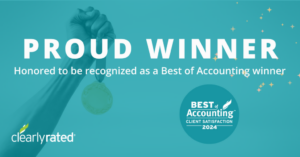Key Takeaways:
- Regularly reviewing funding sources and preparing cash and expense projections on a quarterly, monthly, or even weekly basis is essential to avoid surprises.
- Non-profits must calculate UBIT separately for each unrelated business and allocate deductions among them using a “reasonable basis” standard.
- Non-profit finance committees should engage in scenario planning, developing budgets for various revenue situations, including best case, worst case, and in-between scenarios.
Non-profit leaders face a myriad of challenges, including inflation, difficulty in hiring amid a tight labor market, and cybersecurity threats. If making financial forecasts is more challenging than usual, consider implementing these measures to strengthen your non-profit’s position, regardless of the challenges.
Monitor Cash Flow
Your organization may still be grappling with the aftermath of the pandemic or experiencing reduced donations due to tax law changes. Financial reserves have depleted across all types of non-profits, with some struggling to meet fundraising goals. In such circumstances, effective cash flow management becomes imperative.
Non-profits should prepare cash and expense projections on a quarterly, monthly, and possibly weekly basis. To avoid surprises, your finance committee should review regular reports on funding sources, particularly those at risk of disappearing.
Prioritize UBIT Compliance
Compliance with unrelated business income tax (UBIT) rules is crucial to avoid future issues. Non-profits must calculate UBIT separately for each unrelated business activity, following regulations such as identifying each separate unrelated trade or business with the appropriate code.
If your organization has multiple unrelated trades or businesses, you must allocate deductions among them using a “reasonable basis” standard. Certain types of investments can be treated as single trades or businesses.
Game Potential Scenarios
Initiate scenario planning to prepare for different financial situations. Prepare budgets for various revenue scenarios, including best case, worst case, and somewhere in between.
You should also examine your non-profit’s recent fiscal year’s financial performance for negative indicators by comparing metrics with previous years or benchmarks. Given the unusual nature of 2020 and 2021, consider looking further back when calculating five- and ten-year averages. Review past conditions that contributed to your non-profit’s struggles to determine if they still pose threats to your organization’s future stability.
Run Efficiently
Currently, the U.S. economy remains generally healthy, and there’s no reason to assume your non-profit will face new economic challenges soon. However, it’s important to consistently strive for efficiency, which includes minimizing expenses and diligently monitoring budgets. These actions, along with the previously mentioned strategies, will contribute to your organization’s financial health. If you need help, contact us today.



